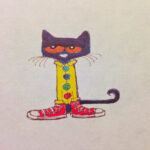For true feline aficionados, the allure of cats resembling majestic wild animals like tigers, leopards, lions, and bobcats is irresistible. If you dream of adding a touch of the wild to your everyday life, and enjoying cuddles without the zoo enclosure, exploring Exotic Cat Breeds might be the perfect path for you. These breeds offer a captivating blend of domestic companionship and striking, wild appearances.
Essential Considerations Before Welcoming Exotic Cat Breeds
Before you fall head over heels for the idea of an exotic feline gracefully prowling your living room, it’s crucial to understand that owning one is a unique experience that differs from traditional cat ownership. These aren’t your average domestic shorthairs; they often come with specific needs and considerations.
Navigating Legal Landscapes
The excitement of owning an exotic-looking cat should be tempered with a realistic understanding of legal regulations. Certain breeds, particularly those with closer wild ancestry like the Savannah cat, are often subject to specific laws. In many regions, particularly in the U.S., Savannah cats are regulated based on their filial generation. For instance, many states stipulate that Savannah cats must be several generations removed from their African serval ancestors (typically four or more) to be legally kept as pets without permits or restrictions.
Beyond breed-specific laws, consider your living situation. If you rent your home or live in a community with homeowner associations, there might be breed-specific restrictions due to size or perceived behavior. Thoroughly investigate local, state, and community regulations before bringing an exotic beauty home to avoid any unforeseen legal complications or heartbreak.
Activity Levels and Enrichment Needs
Exotic cat breeds are not just about striking aesthetics; they are often brimming with energy and intelligence to match their wild appearances. Their lineage often instills in them a love for activity, exploration, and mental challenges. Prospective owners should be prepared to provide ample opportunities for play, exploration, and mental stimulation.
This means stocking up on interactive toys, puzzle feeders, and perhaps even considering leash training for safe outdoor excursions. Breeds like Bengals and Chausies, known for their high energy levels, thrive in environments that cater to their need for physical and mental engagement.
Mental stimulation is equally vital. Puzzle toys, clicker training, interactive play sessions, and even cat-friendly apps can help keep these intelligent felines entertained and prevent boredom-related behavioral issues. A bored exotic cat can quickly become a mischievous exotic cat, potentially leading to unwanted scratching or destructive behaviors. If you are considering an exotic breed, be ready to dedicate time and resources to enriching their environment and fulfilling their activity needs.
Litter Box Logistics and Hygiene
When it comes to bathroom habits, exotic cat breeds can have particular requirements. Often larger in size than standard domestic cats, they require appropriately sized litter boxes for comfort and hygiene. A large litter box is generally recommended to accommodate their size and allow for comfortable movement within the box.
Cleanliness is also paramount. Exotic breeds, like many cats, are fastidious creatures and appreciate a clean litter box. Frequent cleaning is a must to maintain their hygiene and encourage consistent litter box use.
Furthermore, some exotic cats might exhibit preferences for specific types of litter. Some may prefer unscented litter or particular textures. Given their larger size and active metabolisms, they might also use the litter box more frequently, leading to faster waste accumulation. Be prepared for more frequent scooping and potentially more frequent complete litter changes to maintain optimal hygiene and a pleasant environment for both you and your feline companion. Maintaining a pristine litter box is not just about cleanliness; it’s about ensuring your exotic cat feels comfortable and secure in their home.
Exotic Cat Breeds Resembling Tigers
Toyger
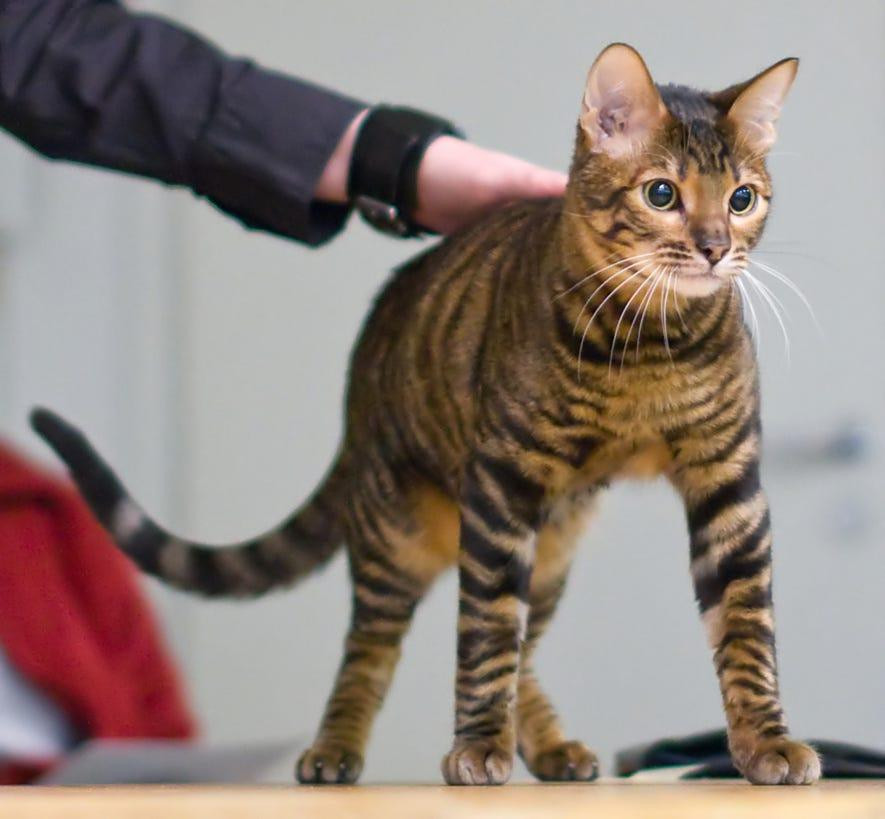 Toyger exotic cat breed
Toyger exotic cat breed
Despite its playful, pun-inspired name, the Toyger is a breed that boasts a striking resemblance to its larger, wild namesake. Characterized by its distinctive orange and black stripes, the Toyger is a purely domestic creation, developed in the 1980s by crossing Bengals with striped Domestic Shorthair cats. There’s no wild cat ancestry in their lineage, making them entirely domestic in temperament and care needs.
Toygers are essentially miniature tigers in appearance, typically weighing up to 15 pounds. Far from being ferocious, they are known for their friendly, affectionate, and playful personalities, making them excellent family pets. Their intelligence and eagerness to please also mean they are highly trainable and can even be taught tricks, adding an element of fun and interaction to their companionship.
Exotic Cat Breeds Resembling Leopards
Bengal
 Bengal exotic cat breed
Bengal exotic cat breed
In contrast to the Toyger, the Bengal cat does possess a lineage connected to wild cats. A hybrid breed resulting from crosses between Asian Leopard Cats and domestic shorthairs, Bengals are undeniably impressive. They inherit striking spotted or marbled coats reminiscent of leopards, combined with a muscular build that can see them reach up to 18 pounds.
Beyond their looks, Bengals are renowned for their intelligence, playful nature (including a fascination with water), and trainability. They can learn tricks, enjoy leash walking, and form strong bonds with their human families. Their adventurous and attention-seeking personalities mean they thrive in active households where they receive plenty of interaction and playtime. If you have ample time to dedicate to an energetic and engaging pet, the Bengal is an exceptional choice.
Ocicat
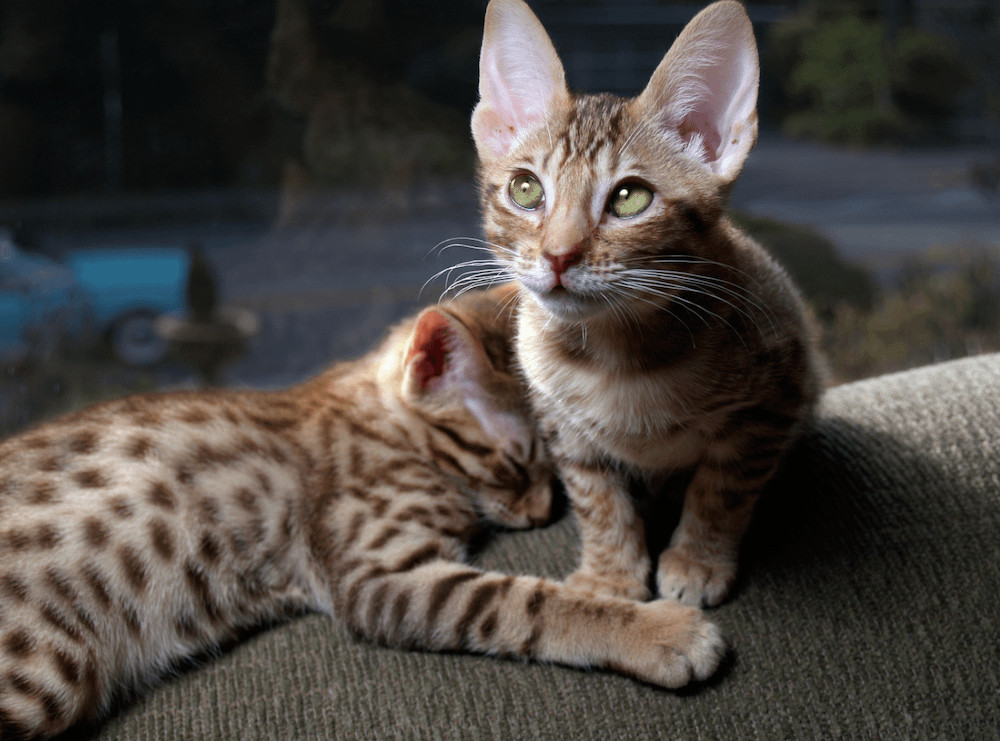 Ocicat exotic cat breed
Ocicat exotic cat breed
The Ocicat is a breed with a fascinating origin story, born from a happy accident in the 1960s. Breeders initially aimed to create a Siamese cat with Abyssinian-colored points. However, when spotted kittens appeared, a geneticist recognized their unique appeal. By further crossing them with American Shorthairs, breeders enhanced their coat colors and solidified the Ocicat as a distinct breed.
Ocicats can weigh up to 15 pounds and exhibit a variety of spotted coat colors, with the tawny spotted variety bearing the closest resemblance to a leopard. Despite their wildcat looks, Ocicats are known for their friendly, outgoing, and devoted personalities. They are highly social and enjoy being involved in their families’ daily activities, making them wonderful, interactive companions.
Cheetoh
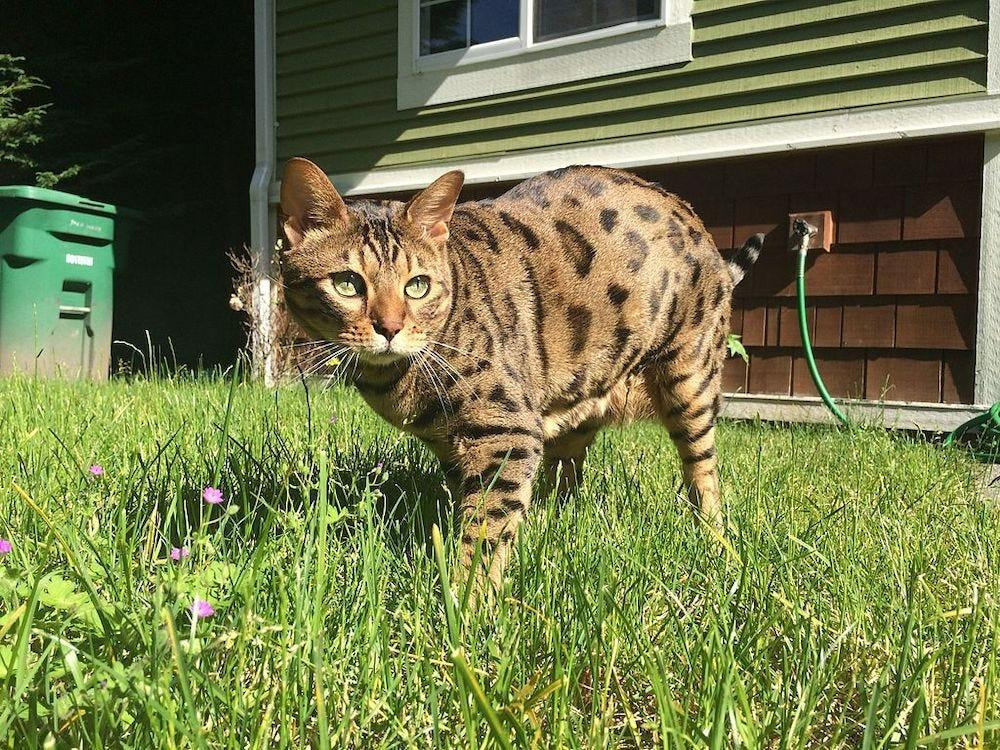 Cheetoh exotic cat breed
Cheetoh exotic cat breed
The Cheetoh cat is a relatively new and rare breed, developed by crossing Ocicats and Bengals. The result is a muscular, large cat with a distinctive spotted coat that evokes the image of a cheetah. They possess a unique gait that resembles stalking prey, further enhancing their wild cat persona.
Despite their predatory appearance, Cheetohs are known for their fun-loving, playful, and affectionate nature. They enjoy snuggling and interacting with their families. As one of the newest exotic cat breeds, the Cheetoh is not yet recognized by all cat associations and breed registries, adding to its rarity. They can reach weights of 20+ pounds, making them one of the larger exotic breeds. Cheetohs are also highly trainable and enjoy outdoor adventures on a leash.
Egyptian Mau
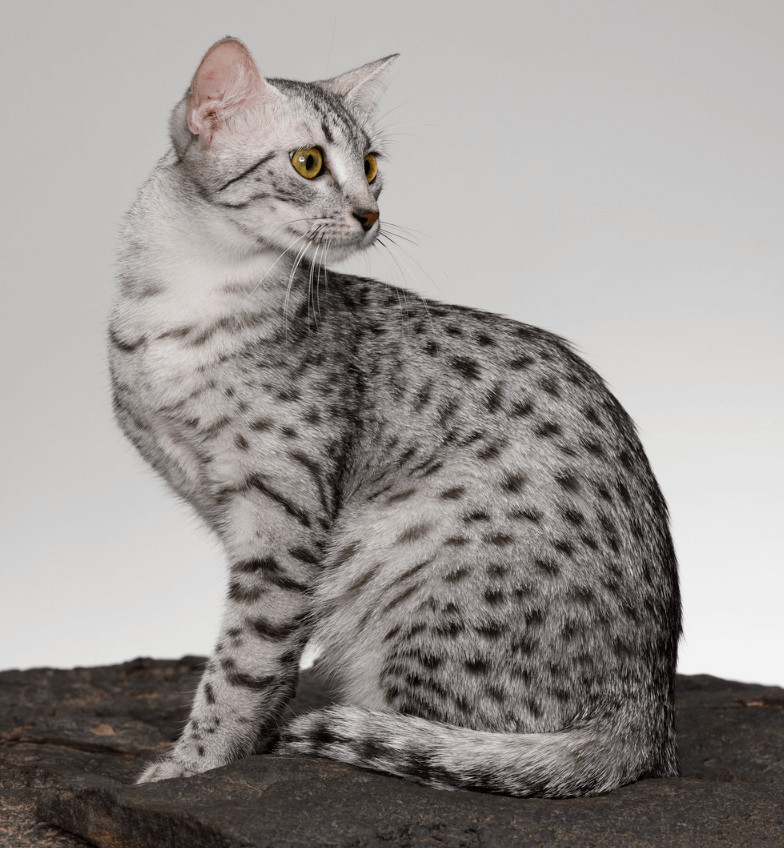 Egyptian Mau exotic cat breed
Egyptian Mau exotic cat breed
Among cats that resemble leopards, the Egyptian Mau may have the strongest claim to resembling a snow leopard, particularly the silver variety. This breed holds the distinction of being the only naturally spotted domestic cat breed. They are also incredibly athletic, capable of running up to 30 mph, making them one of the fastest domestic cats.
Their ancestry is deeply rooted in history, with depictions of similar spotted cats appearing in ancient Egyptian art. The Egyptian Mau is believed to be a direct descendant of the cats revered by ancient Egyptians, making it one of the oldest known domestic cat breeds. In fact, “Mau” is the ancient Egyptian word for cat, further solidifying their connection to this ancient civilization.
Highlander
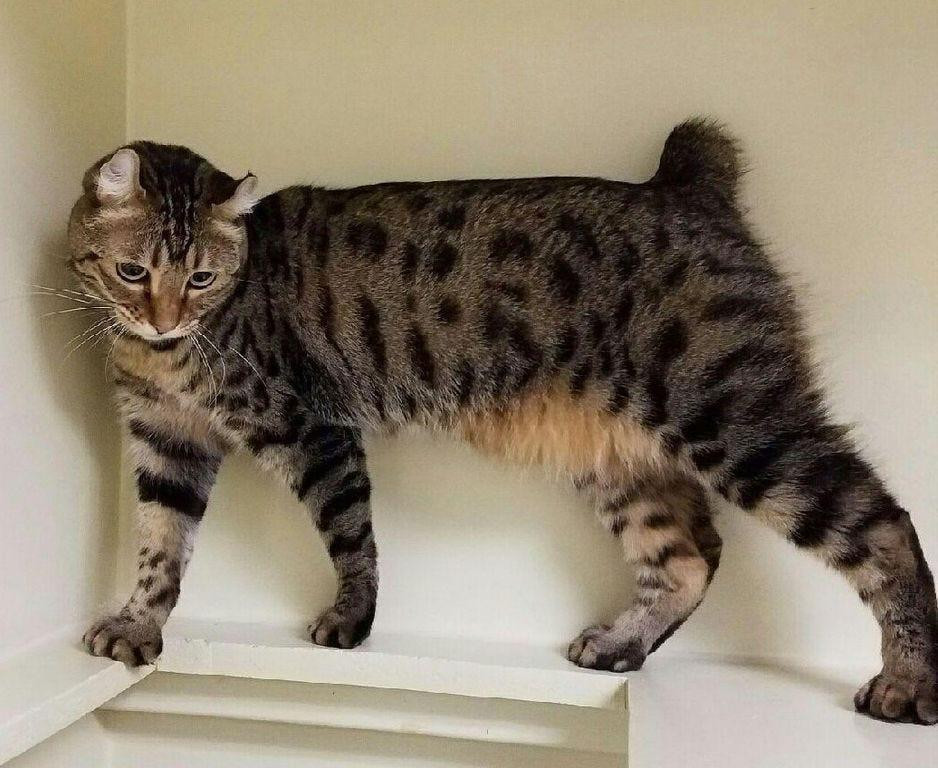 Highlander exotic cat breed
Highlander exotic cat breed
With the Highlander, you get a captivating blend of exotic appearances. Their spotted or marbled coats evoke the leopard, while their bobtails bring to mind a lynx or bobcat. Adding to their unique look are their distinctive curled ears, inherited from one of their parent breeds, the Jungle Curl.
Highlanders are playful and energetic cats that can weigh up to 20 pounds. This man-made breed is considered rare, originating from a cross between the experimental Desert Lynx breed and the Jungle Curl. They combine the striking looks of wild cats with the affectionate and adaptable nature of domestic breeds.
Savannah
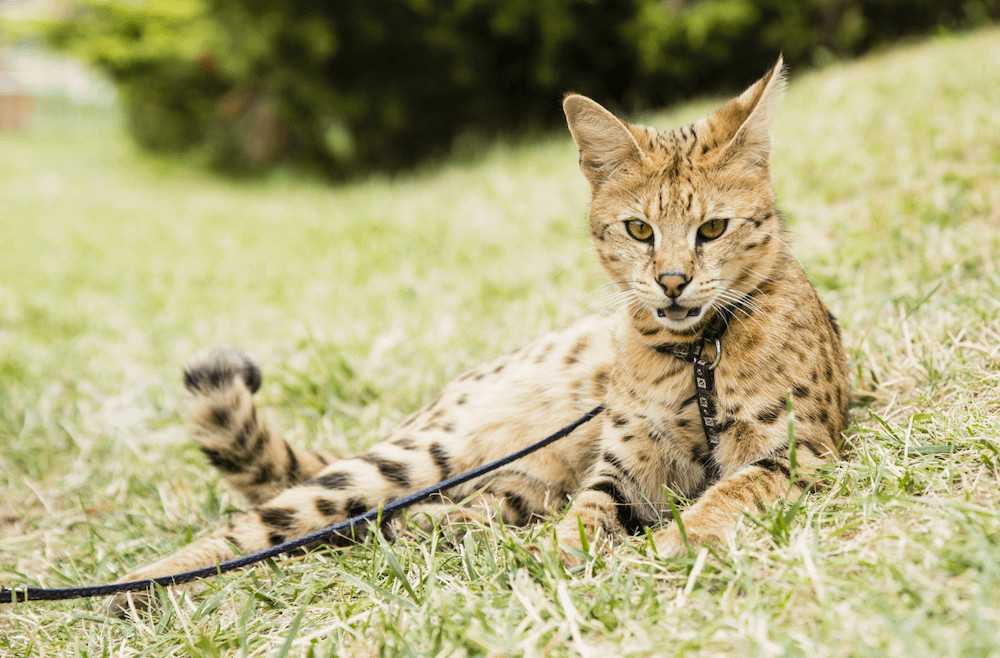 Savannah exotic cat breed
Savannah exotic cat breed
The Savannah cat is arguably the most overtly “exotic” of the listed breeds due to its close lineage to the wild. It is one of the wildest domestic cat breeds available, resulting from crosses between domestic cats (often Siamese) and African servals – medium-sized wildcats. Savannahs are highly active, adventurous, and can grow to be substantial cats, reaching up to 25 pounds or more.
Their strong hunting instincts, a legacy from their serval ancestors, mean they may not be ideal for households with smaller pets like fish, hamsters, or birds. However, Savannah cats are also known for their intelligence and dog-like loyalty to their human families. Due to their serval ancestry, ownership of Savannah cats, particularly early generations (closer to the serval parent), is often regulated. Many regions, especially in the U.S., have regulations requiring Savannahs to be several generations removed from their serval ancestors to be kept as pets without special permits.
Serengeti
 Serengeti exotic cat breed
Serengeti exotic cat breed
Speaking of African servals, the Serengeti cat, despite its name, actually has no serval bloodlines. While it may visually resemble a serval even more closely than the Savannah, the Serengeti was developed by crossing Bengals and Oriental Shorthairs. The aim was to create a cat that looked like a serval but was entirely domestic in temperament.
The Serengeti is a relatively uncommon breed. They are known for their impressive athleticism, capable of jumping up to 7 feet in the air. While they may initially be shy, they typically adapt quickly to become lovable and extremely playful pets. Serengeti cats can weigh up to 15 pounds and are recognized as a preliminary breed by The International Cat Association (TICA).
Bombay
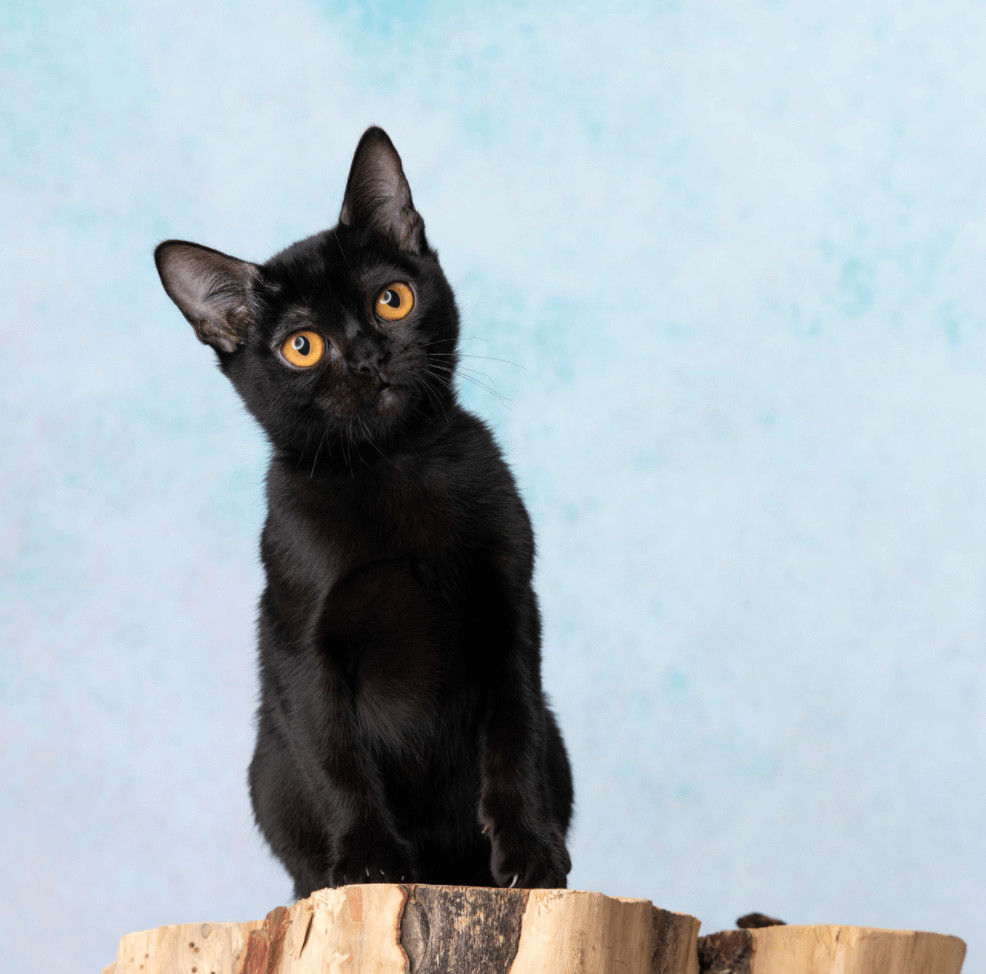 Bombay exotic cat breed
Bombay exotic cat breed
The Bombay cat is bred to resemble the sleek Indian black leopard, also known as a black panther. With a striking, glossy jet-black coat and captivating copper eyes, the Bombay truly embodies the appearance of a miniature panther.
Bombays are playful and intelligent cats that enjoy learning tricks. They are also known for their affectionate and people-oriented nature, often greeting family members and visitors at the door. Developed in the United States, the Bombay was created to resemble a Burmese cat but with a distinctive black coat. Despite its American origin, the breed was named after Bombay, India, the “land of the black leopard,” to reflect its desired appearance. They typically weigh up to 15 pounds and are highly people-focused, thriving on companionship and interaction. If you prefer a more independent cat, the Bombay might be a bit too attached for your liking.
Exotic Cat Breeds Resembling Lions
Abyssinian
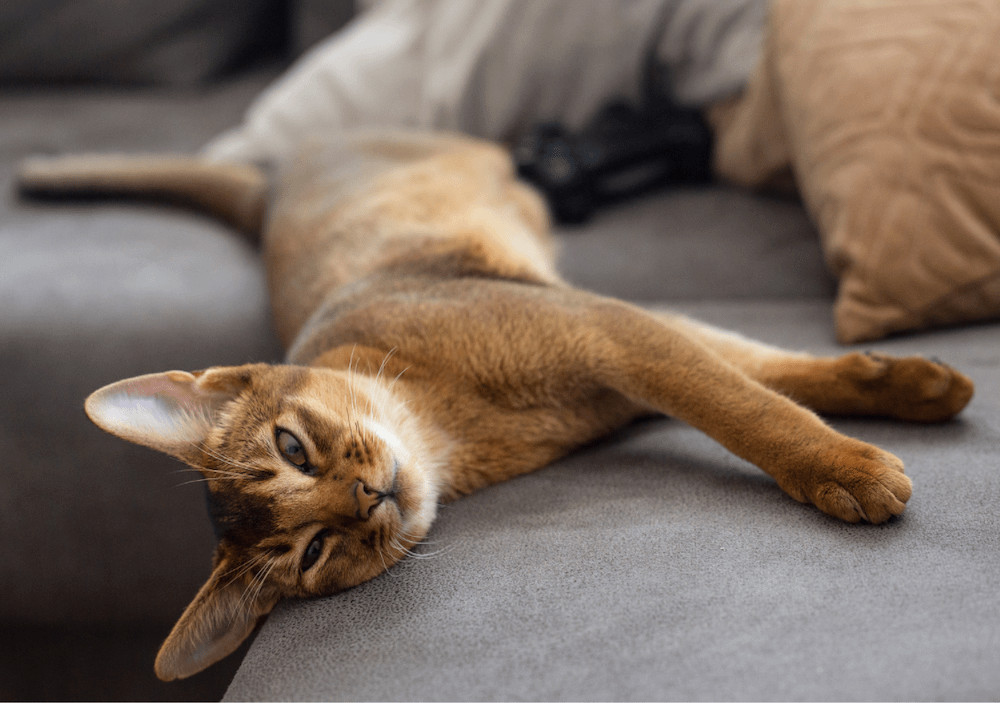 Abyssinian exotic cat breed
Abyssinian exotic cat breed
The Abyssinian cat is considered one of the oldest domesticated cat breeds, possibly originating in ancient Abyssinia (now Ethiopia) around the time of ancient Egypt. With their ticked tabby coat pattern, they bear a striking resemblance to a miniature mountain lion, particularly in their overall lithe build and regal bearing.
Abyssinians are energetic and affectionate, but not typically lap cats. They are relatively small, weighing between 7 and 10 pounds. Known for their curiosity and intelligence, Abyssinians are independent yet thrive on attention and interaction. They enjoy playing games with their humans and require puzzle toys and climbing opportunities to keep them mentally and physically stimulated.
Chausie
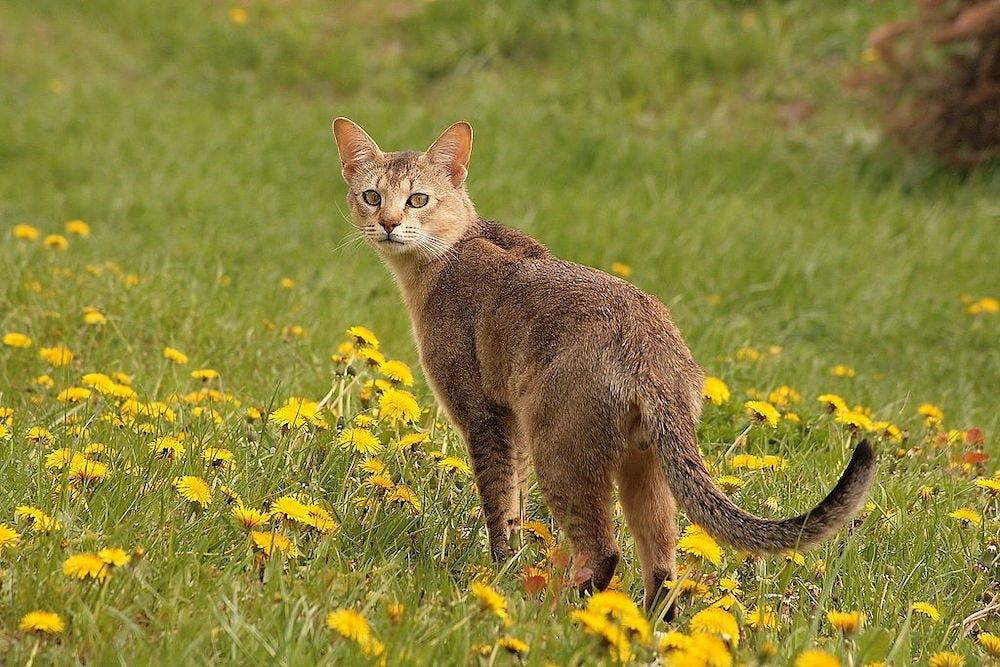 Chausie exotic cat breed
Chausie exotic cat breed
Among cats that resemble lions, the Chausie has a particularly strong claim to wild ancestry. This rare breed is directly descended from the Jungle Cat (Felis chaus) and retains a proud, active nature reminiscent of its wild forebears. The Jungle Cat, the Chausie’s ancestor, is believed to have been domesticated by the ancient Egyptians, and mummified remains of similar cats have been found in Egyptian tombs. The name “Chausie” itself is derived from the Latin name for Jungle Cat, felis chaus.
Chausies are large cats, capable of reaching up to 25 pounds. While small compared to a lion, they are significantly larger than many domestic cat breeds, adding to their imposing presence. They are known for their outgoing personalities, enjoying meeting new people, leash walking, and even playing fetch, blurring the lines between feline and canine traits.
Exotic Cat Breeds Resembling Bobcats
American Bobtail
 American Bobtail exotic cat breed
American Bobtail exotic cat breed
The distinctive short tail of the American Bobtail cat is a naturally occurring trait that likely developed to aid survival in their native environment of the American Southwest. While their bobbed tail and sometimes lynx-like markings give them a bobcat-like appearance, American Bobtails are thoroughly domestic in temperament. They are devoted family pets known for their gentle nature and playful personalities, even enjoying games of fetch.
American Bobtails are slow to mature, reaching full maturity around 3 years of age, and can weigh up to 16 pounds. Their adaptable nature, stemming from their origins, makes them well-suited to various living environments. Their bobbed tail is a defining characteristic that doesn’t hinder their agility but certainly adds to their unique charm.
Kurilian Bobtail
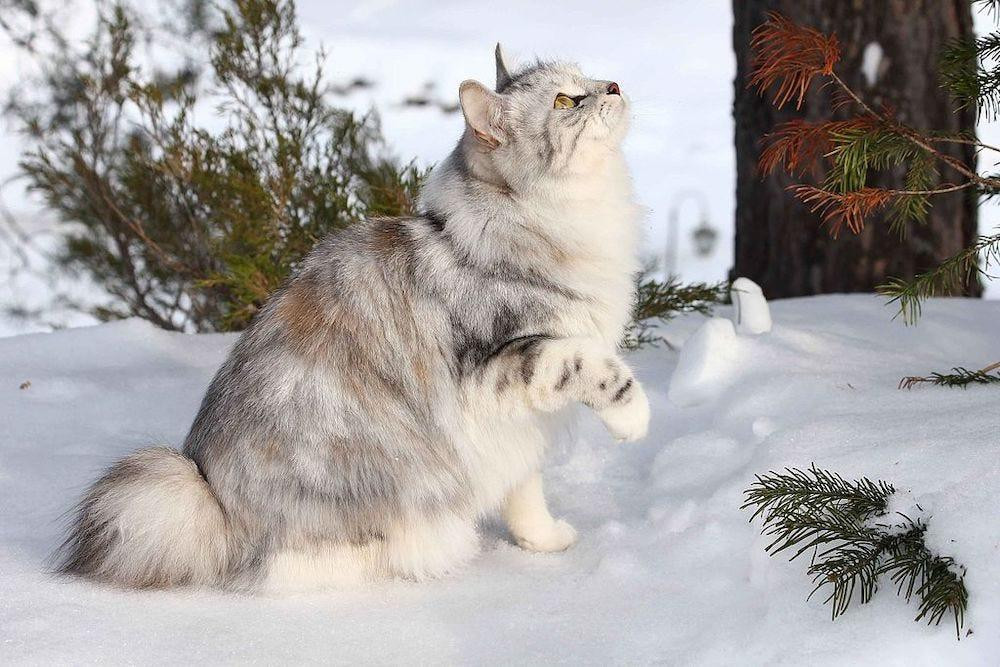 Kurilian Bobtail exotic cat breed
Kurilian Bobtail exotic cat breed
The Kurilian Bobtail is a natural, though relatively uncommon, breed originating from Russia’s Sakhalin island and the Kuril archipelago. They were introduced to central Russia in the mid-20th century. Kurilian Bobtails resemble a lynx in appearance, particularly due to their sturdy build and their characteristic “pom-pom” tail, which is short and often curled or kinked.
This breed has a playful affinity for water and is known for being skilled mousers. Despite their somewhat wild appearance, they are also cuddly and affectionate lap cats. Their easygoing, sociable, and gentle nature makes them well-rounded companions.
Manx
 Manx exotic cat breed
Manx exotic cat breed
The tail-free Manx breed originated on the Isle of Man, from which they take their name. Historically, they developed as mousers and retain strong hunting instincts. However, when not on duty, Manx cats are affectionate, people-oriented companions.
It is important to note that the taillessness in Manx cats is due to a genetic mutation that can, unfortunately, lead to severe developmental abnormalities and even be fatal to kittens and cats. If you are interested in a Manx, adopting from a reputable rescue organization is highly recommended to avoid supporting unethical breeding practices that perpetuate health issues.
Pixie-bob
 Pixiebob exotic cat breed
Pixiebob exotic cat breed
Of all the cats resembling bobcats, the Pixie-bob has the most debated origins. While legend suggests a lineage tracing back to wild American bobcats, the breed is actually a purely domestic creation with a naturally occurring tail mutation. Breeders further developed the Pixie-bob to intentionally resemble the wild Coastal Red Bobcat found in the Pacific Northwest.
The Pixie-bob is unique as the only breed that officially accepts polydactyly (extra toes). They come in both shorthaired and longhaired varieties and are known for their devoted and dog-like personalities.
Have you not had your fill of exotic cat breeds yet? Consider visiting your local animal shelter or rescue organization – you might just find your own exotic-looking companion waiting for you!
If you decide to welcome an exotic cat breed into your home, remember to consult resources on responsible cat adoption to ensure you are fully prepared for the joys and responsibilities of pet ownership.

